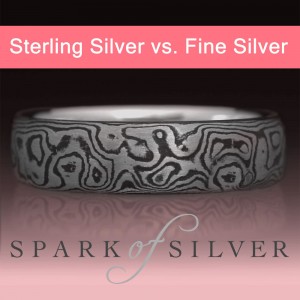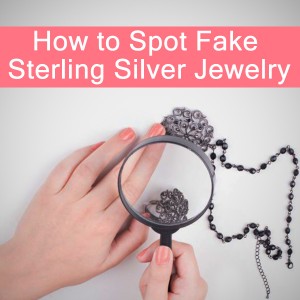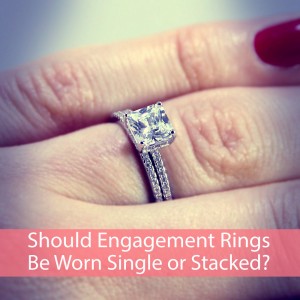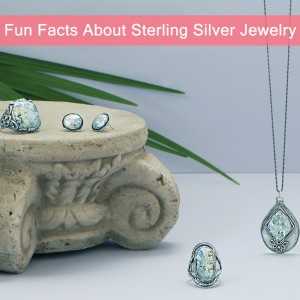There are many types of silver available in the jewelry market today. It is important to be familiar with the types of silver used in jewelry in order to educate your customers about silver quality standards. Below are some definitions and comparisons of the many silver metals used to make jewelry around the world.
It is important to understand that silver used in jewelry is usually an alloy. This means that it is mixed with a couple of other metals/elements from the periodic table.
What Are Types of Silver Used in Jewelry
Most finished silver jewelry will have a quality stamp somewhere on the piece. This stamp is the quickest way to identify quality. These tiny markings may only be legible under magnification, and pieces are only required to bear a stamp when there is sufficient surface area available. For that reason, many smaller pieces are unstamped even though they are quality alloys. The types of silver used in jewelry are described in detail below.
Quality Stamp
Fine .999 Silver
Fine silver is the closest metal to the pure silver element. It is described as .999, indicating 99.9% purity. The remaining 0.1% consists of trace elements of insignificant quantity. Fine silver appears more dull compared to the bright polish of sterling. Fine silver is soft and will scratch, dent and change shape relatively easily. For these reasons, fine silver jewelry is not as common as sterling silver jewelry sine the pieces will not hold up well over time. The benefits of fine silver are that it is easy to form and it is highly resistant to tarnish. Because it is a soft metal, fine silver is best used for earrings or necklaces instead of rings or bracelets which are more prone to rough wear.
Sterling .925 Silver
Sterling silver is the jewelry quality standard in the United States and most world markets, making it the most common of the types of silver used in jewelry. Sterling silver is an alloy of 92.5% silver. The remaining 7.5% is usually copper, although other metals such as nickel are sometimes used as well. The other metals add durability, strength, and luster to the silver. Sterling silver is bright and shiny but prone to tarnish. Although sterling silver is harder than fine silver, it is still fairly soft compared to many other metals. For example, jewelry can be scratched or dented if it is banged around. The most common quality stamps are .925 and Stg.
Argentium Silver and Non-Tarnish Alloys
Non-tarnish alloys are relatively new to the market. Argentium is one brand of these alloys, but there are others available that are similar. These alloys contain a minimum of 92.5% silver, with some slightly higher in silver content. The remainder consists of copper and the addition of the element germanium. The germanium makes the alloy harder and more tarnish-resistant. Non-tarnish alloys can still tarnish under extreme conditions over extended periods of time, but they will normally require less maintenance than sterling. Argentium is significantly more expensive than sterling and less readily available. It is hard to distinguish from sterling because the quality stamp is still .925. Manufacturers can go through an application process to receive authorization to use the Argentium® mark, but this stamp impractical for many jewelry pieces because of its large size.
Coin Silver
Coin silver was once a common alloy in the United States. It is now relatively rare and the name causes some confusion. The technical “coin silver” alloy is .900 silver, or 90% silver and 10% copper. It was not used to make coins, but at one point in time it was made from refined scrap coins. Monetary coins in our country, and most others, no longer contain silver and are made from more inexpensive and durable base metals. Coin silver jewelry that is still on the market will bear a quality stamp of .900, and they are rare antiques.
Silver Filled
Silver-filled is a new layered metal, introduced during the surge of silver prices during the recession. It is not an alloy because the metal content is not the same throughout the material. Silver filled is either 5% or 10% sterling silver by weight, fused with heat and pressure to a brass core. Since silver-filled is a layered metal it cannot be cast. The silver layer thicker than silver plated, but this is still a much lower quality product than most solid silver alloys. Now that the price of silver has gone down, this metal is less common in the market. There is no legally approved quality stamp standard for silver-filled pieces at this time.
Silver Plated
Silver plated is a base metal product with a very thin silver plating applied to the surface. Even when jewelry is described as fine silver-plated, the overall silver content is a small fraction of a percent. Silver-plated jewelry makes affordable costume jewelry. Plating can tarnish and will eventually wear off to expose the base metal underneath.
Nickel Silver
In the case of nickel silver, the term “silver” describes the color of the metal, not the content. Nickel silver is a base metal alloy consisting of mostly copper combined with nickel and/or zinc. It is an inexpensive base metal that is similar in appearance to sterling silver. Nickel silver is used in costume jewelry but should be clearly marked and described as a nickel alloy since many people are allergic to nickel.
Tibetan/Tribal Silver
Like nickel silver, Tibetan and/or tribal silver are base metal alloys that are only silver in appearance. Contents of the alloys vary tremendously and may not even contain any silver. Some imports from exotic areas contain dangerous metals such as lead; buyer beware. This jewelry should be purchased with caution and never given to children. Tribal pieces can be quite beautiful, so purchase for the value of the piece and design rather than the value of the material.
How To Test For Silver Quality
There are two common tests to determine the silver content in an alloy. X- ray testing is non-destructive but requires expensive equipment. Jewelry must be sent to a lab for x-ray testing. This test is relatively accurate on most silver items. The machine can be fooled by layered metals and some types of plating, so the accuracy is approximate. Assay testing is a destructive test that is more accurate. In this test, at least .5 grams of metal are melted down so the alloyed elements and ratios can be accurately measured. Neither of these tests are a practical option for consumers looking for a quick test at home. Instead, consumers are advised to buy silver from reputable manufacturers that are honestly disclosing details on their materials.








